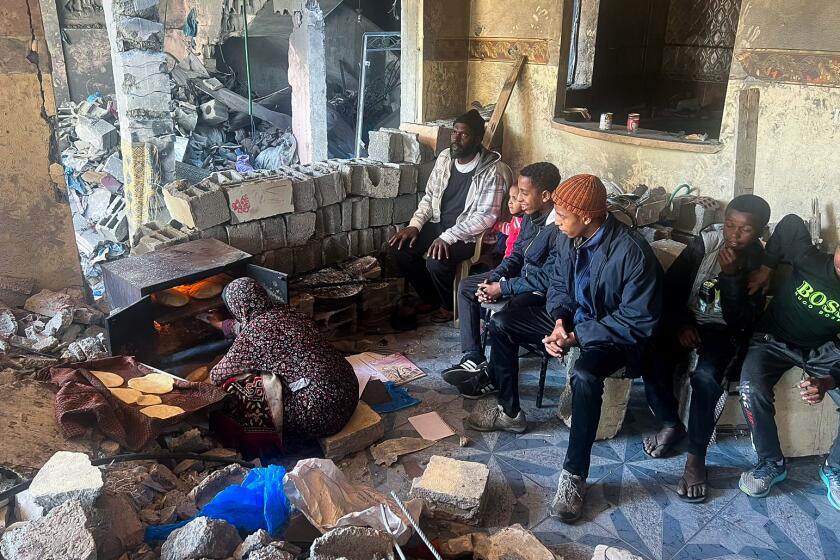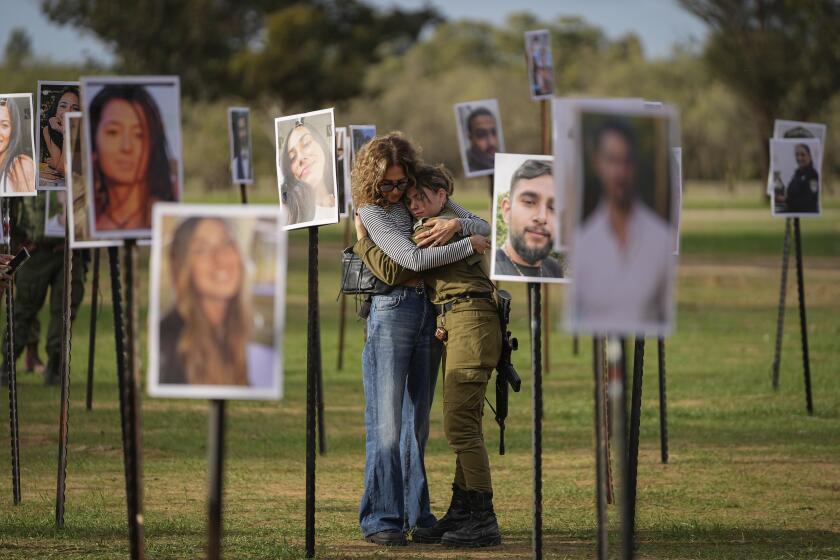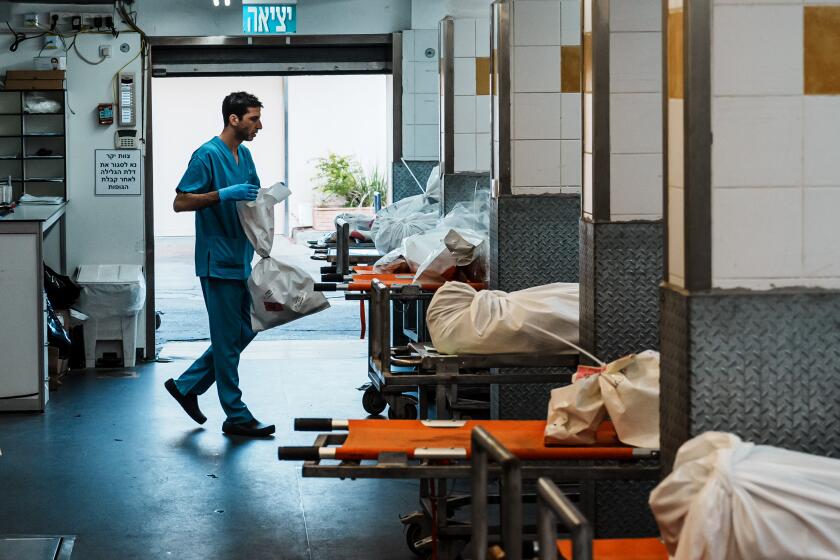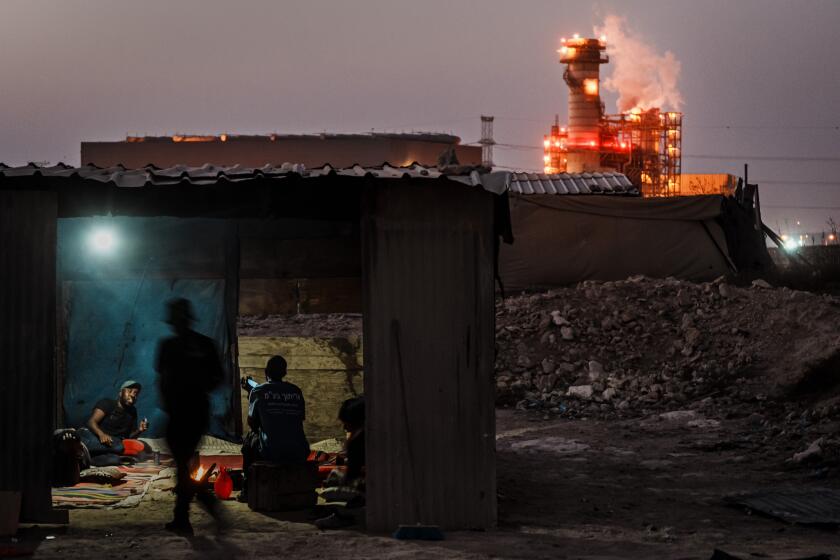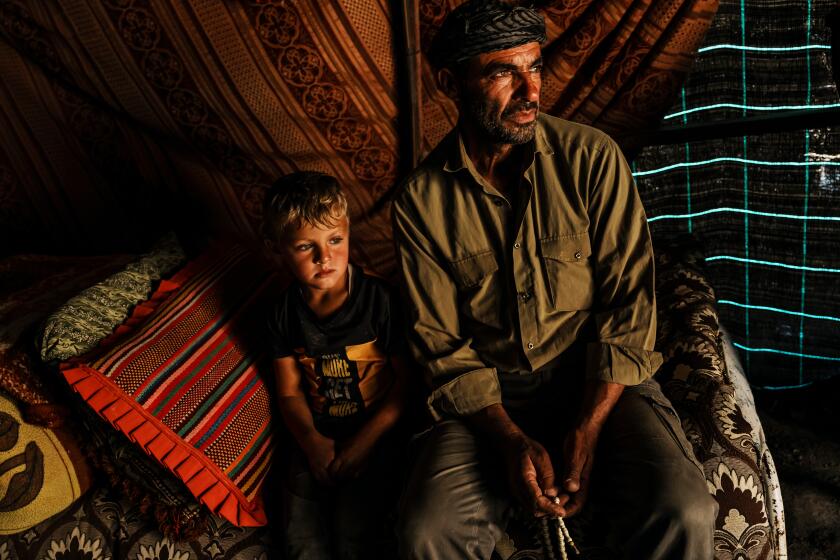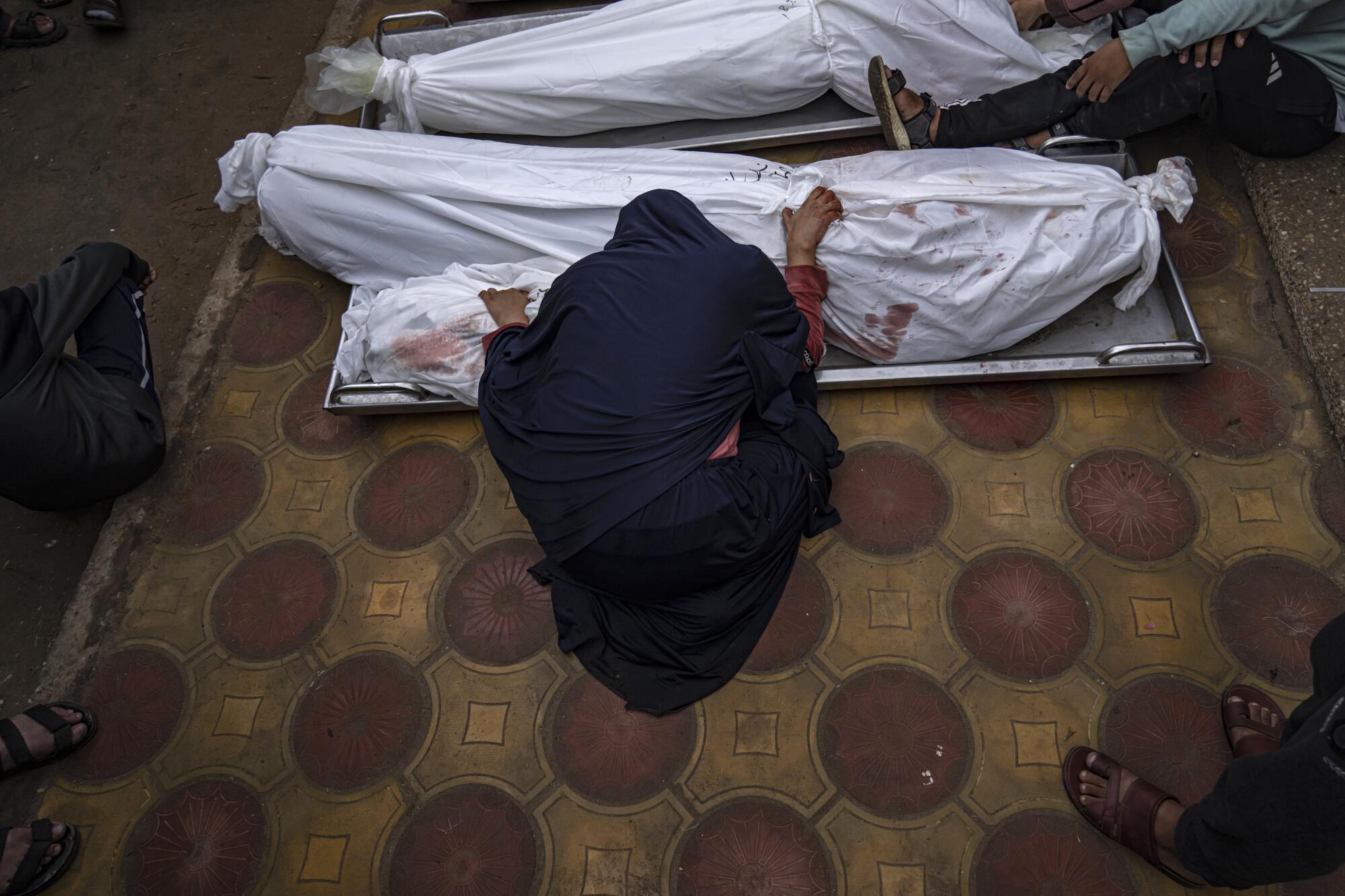
KHAN YUNIS, Gaza Strip — Israel said Tuesday that its troops had entered Gaza’s second-largest city as intensified bombardment sent streams of ambulances and cars racing to hospitals with Palestinian casualties, including children, in a bloody new phase of the war.
The military said its forces were “in the heart” of Khan Yunis, which has emerged as the first target in the expanded ground war in the southern Gaza Strip that Israel says aims to destroy the militant group Hamas. Military officials said they were engaged in the “most intense day” of battles since the ground attacks began more than five weeks ago, with heavy firefights also taking place in northern Gaza.
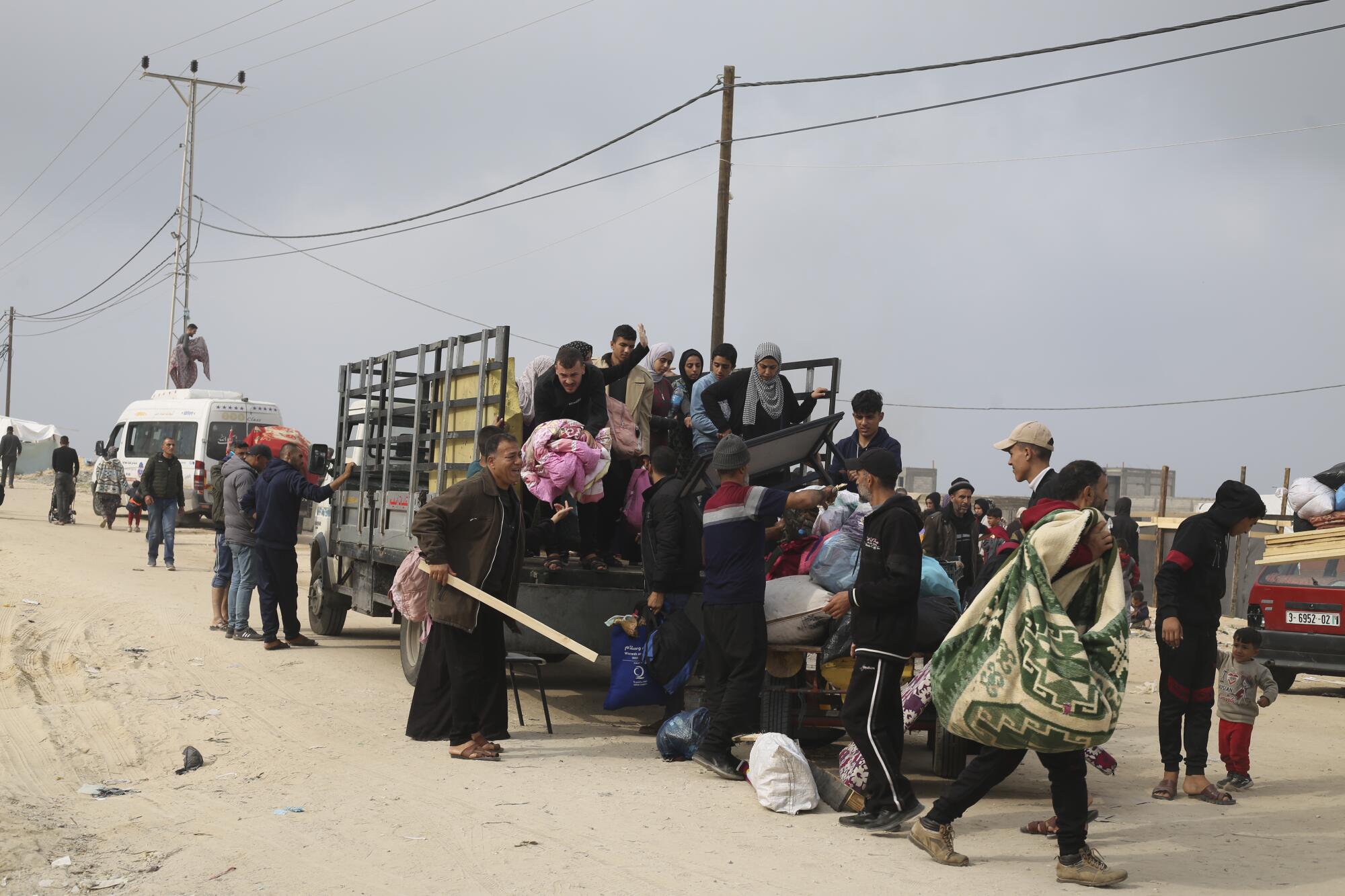
The assault into the south threatens to fuel a new wave of displaced Palestinians and a worsening of Gaza’s humanitarian catastrophe. The United Nations said that 1.87 million people — more than 80% of the Palestinian territory’s population — have been driven from their homes, and that fighting is preventing distribution of food, water and medicine outside a tiny sliver of southern Gaza. New military evacuation orders are squeezing people into ever-smaller areas of the south.
Bombardment has grown fiercer across the territory, including areas where Palestinians are told to seek safety. In the central Gaza town of Deir al Balah, just north of Khan Yunis, a strike Tuesday destroyed a house where dozens of displaced people were sheltering. At least 34 people were killed, including at least six children, according to an Associated Press reporter at the hospital who counted the bodies.
‘I just don’t know where we’ll go.’ It’s a question Palestinians ask over and over in Gaza as Israel ramps up bombardment after Hamas truce collapsed.
Video from the scene showed women screaming from an upper floor of a house reduced to a concrete shell. In the wreckage below, men pulled the limp body of a child from under a slab next to a burning car. At the nearby hospital, medics tried to resuscitate a young boy and girl, bloodied and unmoving on a stretcher.
Israel’s assault in retaliation for Hamas’ Oct 7 attack has killed more than 15,890 people in Gaza — 70% of them women and children — with more than 42,000 wounded, according to the Health Ministry in the enclave. The ministry does not differentiate between civilian and combatant deaths. It says hundreds have been killed or wounded since a weeklong cease-fire ended Friday, and many still are trapped under rubble.
Israel says it must remove Hamas from power to prevent a repeat of the attack that ignited the latest war. Hamas and other militants killed at least 1,200 people, mostly civilians, and took captive about 240 men, women and children on Oct. 7, according to the Israeli government.
As the Palestinian militant group Hamas frees more hostages amid a temporary truce with Israel, a harrowing glimpse of captivity in war-torn Gaza emerges.
A forensic investigator in Tel Aviv works to reassemble remains of victims of Hamas militants, trying to understand the causes of death and the underlying cruelty.
Prime Minister Benjamin Netanyahu said Tuesday that the Israeli military would have to retain open-ended security control over the Gaza Strip long after the war ends. His comments suggested a renewed direct Israeli occupation of Gaza, which the United States says it opposes.
Netanyahu said only the Israeli military can ensure Gaza remains demilitarized. “No international force can be responsible for this,” he said at a news conference. “I’m not ready to close my eyes and accept any other arrangement.”
Under U.S. pressure to prevent further mass casualties, Israel says it is being more precise as it widens its offensive and is taking extra steps to urge civilians to evacuate out of its path. Weeks of bombardment and a ground assault have obliterated much of northern Gaza.
The military accuses Hamas of using civilians as human shields when the militants operate in dense residential areas. But Israel has not provided accounting for targeting in individual strikes, some of which have leveled entire city blocks and complexes of dozens of multi-story apartment towers.
Bedouins of the Negev desert face rockets from Gaza and discrimination and arrest by Israel. They seek safety as the war energizes the far right.
Residents said troops advanced to Bani Suheila, on Khan Yunis’ eastern edge.
The previous days brought some of the heaviest bombardment of the entire war, the U.N.’s humanitarian affairs office OCHA said.
Witnesses said a strike Tuesday hit a school in Khan Yunis where hundreds of displaced people were sheltering. Casualties overwhelmed the nearby Nasser Hospital, where wounded men and children lay on a bloody floor amid a tangle of IV tubes. In the morgue, a woman draped herself over the stretcher where her dead husband and child lay among at least nine bodies.
“What’s happening here is unimaginable,” said Hamza Bursh, who lives near the school. “They strike indiscriminately.”
This moment in the Israel-Hamas saga can be glimpsed in the fate of two fathers, strangers who share misfortunes brought on by larger powers and are now left to find their way
In northern Gaza, the military said its troops were battling Hamas militants in the Jabaliya refugee camp and the district of Shajaiya. The battles in the north signaled the tough resistance from Hamas since Israeli forces moved in on Oct. 27. Even after weeks of unrelenting bombardment, Hamas’ top leader in Gaza, Yahya Sinwar, was able to conduct complex cease-fire negotiations and orchestrate the release of more than 100 Israeli and foreign hostages in exchange for 240 Palestinian prisoners last week. Palestinian militants have also kept up their rocket fire into Israel.
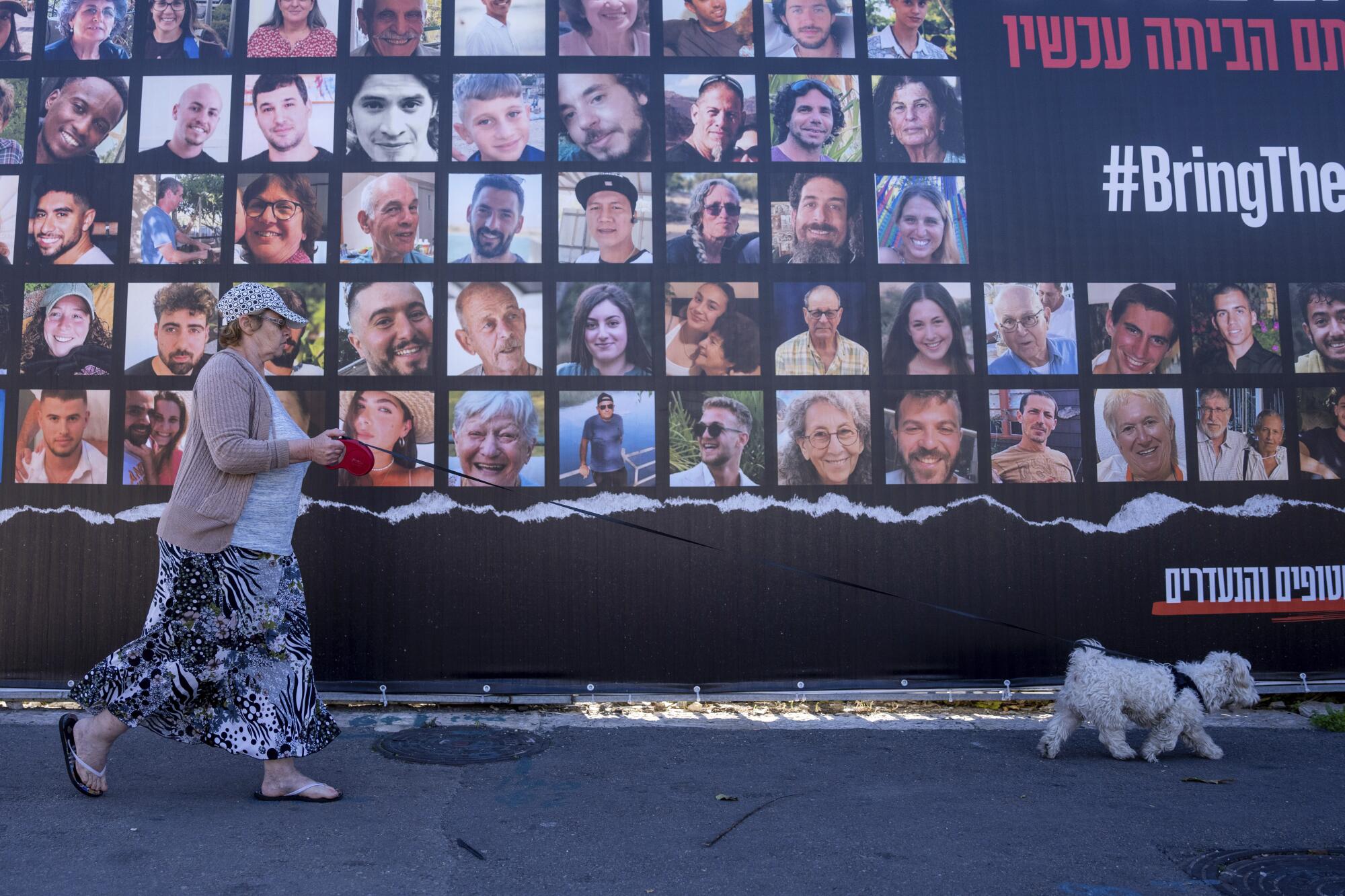
After the full-scale evacuation of northern Gaza ordered by Israel, most of the territory’s 2.3 million people are squeezed into 90 square miles of central and southern Gaza, and the Israeli military has since ordered people out of neighborhoods in and around Khan Yunis.
“Nowhere is safe in Gaza, and there is nowhere left to go,” Lynn Hastings, the United Nations’ humanitarian coordinator for the Palestinian territories, said Monday. “The conditions required to deliver aid to the people of Gaza do not exist. If possible, an even more hellish scenario is about to unfold.”
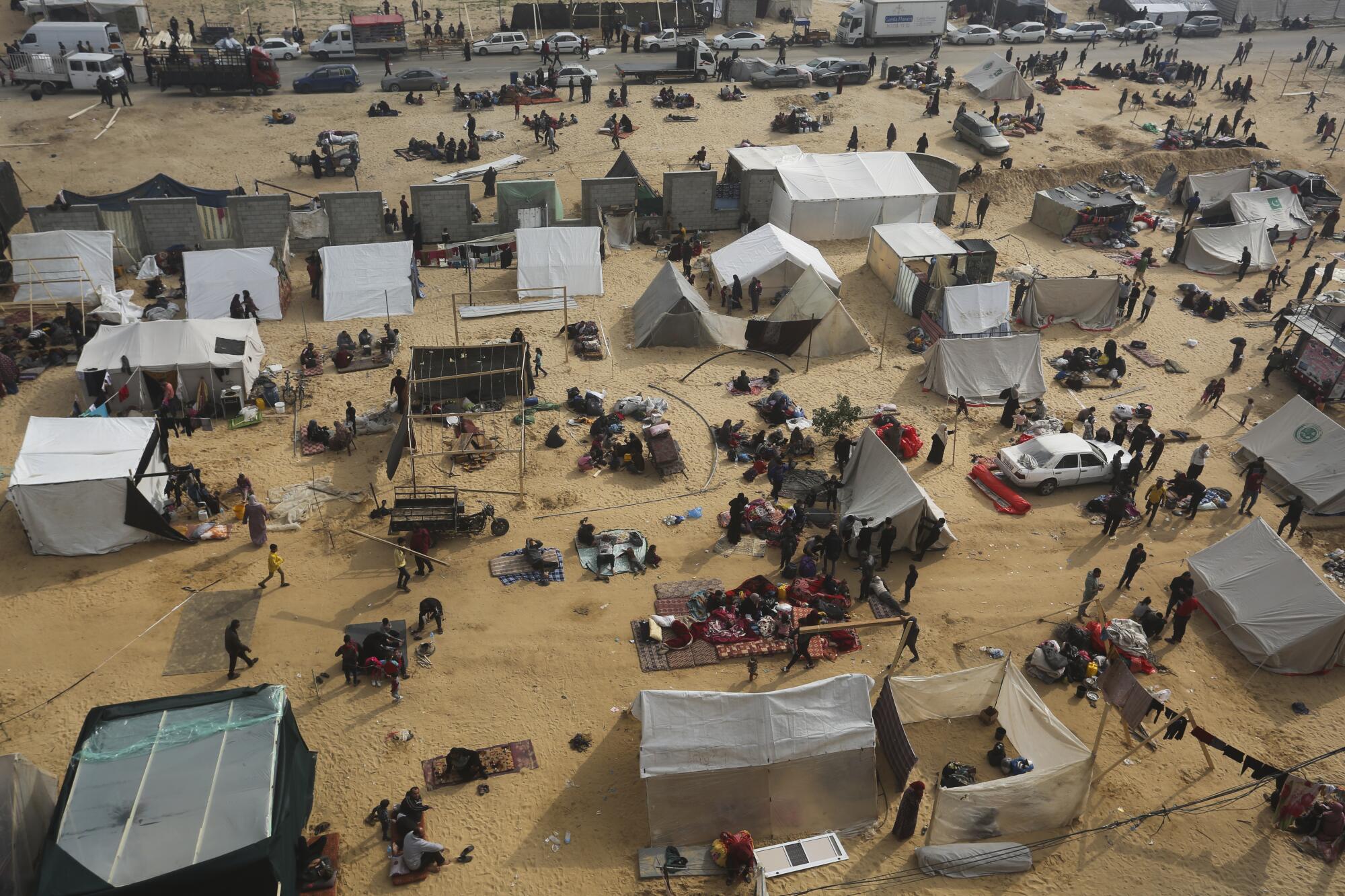
For the last two days, aid distribution — mainly just supplies of flour and water — has been possible only in the city of Rafah, at the far south by the border, the U.N. said. Locations deeper inside Gaza, including Khan Yunis, Deir al Balah and northern Gaza, could not be reached because of fighting.
If Gazans are forced into Egypt or elsewhere, they will only add to the 75-year-old Palestinian refugee crisis.
Dr. Nasser Bolbol, head of neonatal intensive care at the European Gaza hospital in Khan Yunis, said acute hunger was spreading, with children dying of dehydration and undernourishment, after nearly two months with only limited aid entering the territory under an Israeli blockade.
“Gaza is entirely covered in death and darkness,” he said.
In Israel, family members of hostages still held in Gaza held tense talks Tuesday with Netanyahu and the war Cabinet.
Observers present said more than 100 people attended the nearly three-hour meeting. Some relatives shouted at Cabinet members, perceiving they did not have any immediate plans to rescue an estimated 138 people still held hostage. Nearly half the room left in disappointment before the meeting ended.
“It was not a relaxed discussion,” said Noam Peri, whose 80-year-old father is still held captive. “After 60 days, people are tired and worried.”
More to Read
Sign up for Essential California
The most important California stories and recommendations in your inbox every morning.
You may occasionally receive promotional content from the Los Angeles Times.
